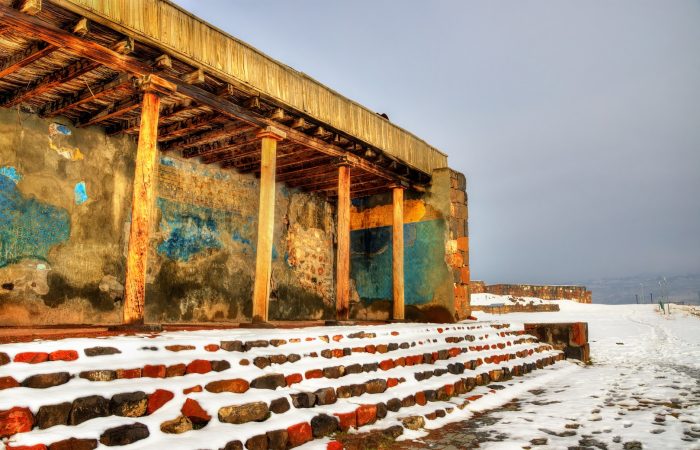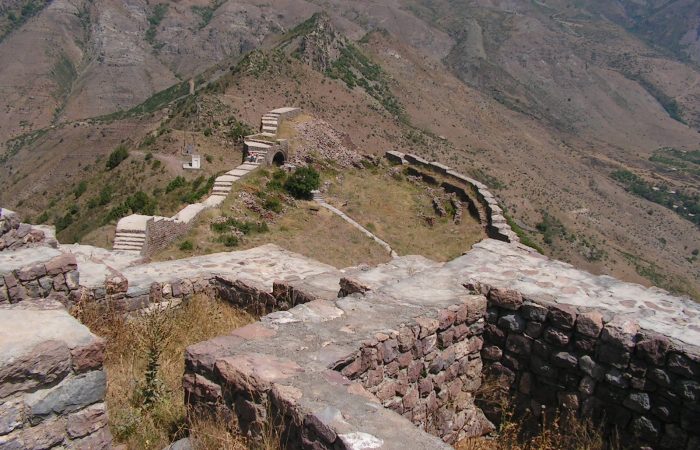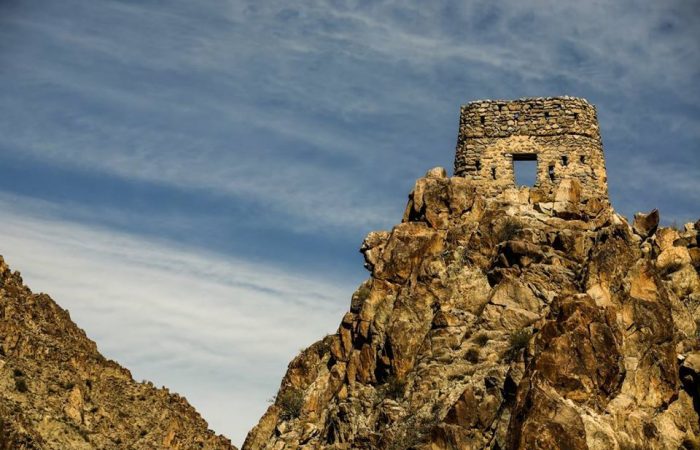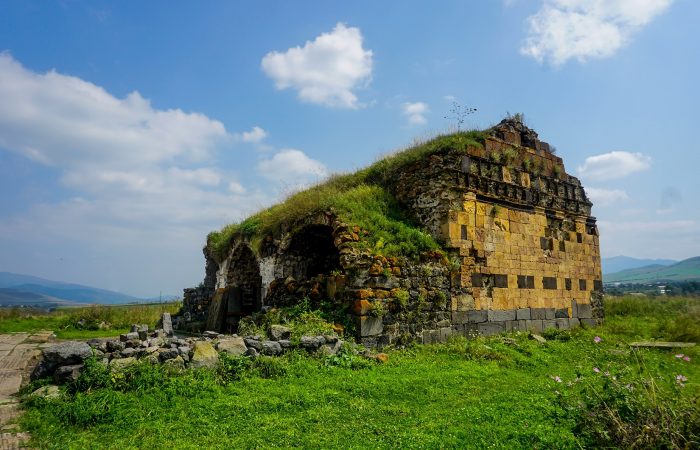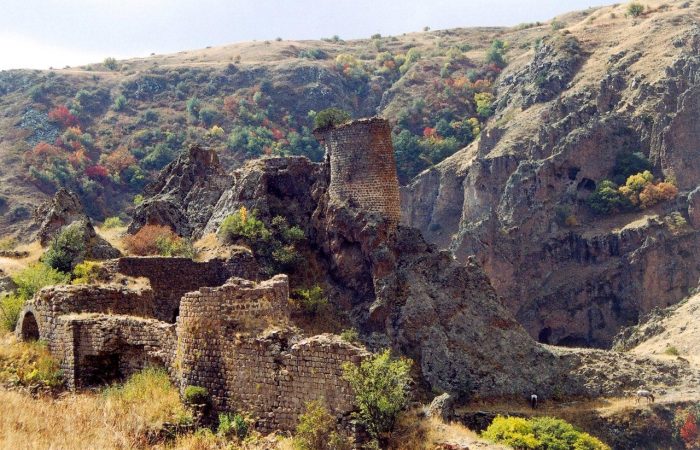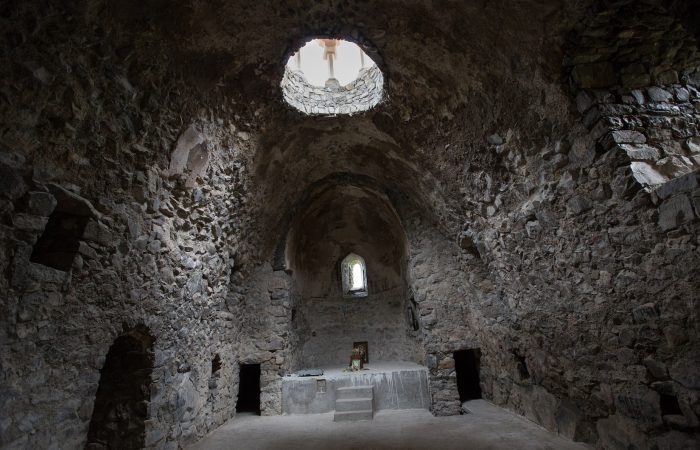Already in 1925 there were 400 works by Armenian, Russian and European artists displayed in six halls. Donations have played a significant role in the formation of the museum. Those who had survived the genocide and had escaped from Armenia had settled in the Middle East, Europe and the Americas. Referring to those countries as their second homeland Armenians had started to set up national communities and actively get involved in their political, economic and social life as well as start an active cultural activity. Despite that, they missed their motherland, and in this respect, it’s no surprise the artists were very much concerned about and devoted to the formation of the cultural life of their reviving Armenia, especially to the establishment of the art gallery.
In 1923 an appeal was made to the Armenian artists of France to help the museum and the appeal was not left neglected. Vardan Makhokhyan, Rafayel Chichmanyan and others responded and by 1935 they had donated around 40 works. Among other donators there were painters Martiros Saryan and Panos Terlemezyan, collectors V. Vahanyan and V. Qananyan, and so on.
National Gallery Collection
The National Gallery’s collection is presently the largest and not in vain it’s considered the largest art gallery in Armenia with its collections displayed in 56 halls. The museum’s collection includes works by Armenian, European, Russian artists as well as decorative applied art works. The combination of the museum’s entire collection helps the museum recount about the development of national visual arts, decorative applied arts and world culture from the ancient times till our days.
Armenian Collection
This section introduces the development of the Armenian painting art from the sixth to the 20th centuries, its style variations as well as works by individual masters. The exposition of the Armenian classical art features the copies of medieval mural paintings and miniatures. They were made in between 1936-1951 by a group of Armenian painters led by Lidia Durnovo. The Armenian art of the 18th to 20th centuries is hard to describe and assess without considering its cultural relations with Russia, Western Europe and other eastern countries. Of special interest is Hakob Hovnatyan’s art. The artist used to work in Tiflis in 1830-1880 and his series of portraits express the individuality of every person depicted in it, their social status as well as the artist’s skills.
The exposition also includes works by Armenian masters who used to live abroad and who returned to their homeland. One such artist was sea painter Hovhannes Aivazovsky who is presented in the museum with 62 paintings in which the scenes harmonize with Armenian themes and in which the artist’s utmost care towards his compatriots is clearly felt.
The considerable part is devoted to the works by such outstanding Armenian artists like Vardges Surenyants, Stepan Aghajanyan, Yeghishe Tadevosyan, Panos Terlemezyan, Gevorg Bashinjaghyan, Martiros Saryan and Hakob Kojoyan. Another artist worth mentioning is Minas Avetisyan who managed to combine the traditions of Armenian medieval painting and the experience of post-impressionists and fauvists.
Sculpture – The origins of Armenian sculpture date back to the prehistoric worship monuments. The first Armenian secular sculptor is considered to be Yervand Voskan, a graduate of the academy of Fine Arts in Rome, while the founder of the portrait genre is considered to be Andreas Ter-Manukyan, a graduate of the Academy Julienne in Paris. The greatest Armenian sculptor of the first half of the 20th century was Hakob Gyurjyan. He is known to have raised Armenian sculpture to international standards. Currently the museum possesses 500 works by him, out of which around 400 were donated by his wife.
Armenian sculpture started flourishing during the post war period. Several outstanding sculptors of this period were Samvel Manasyan, Derenik Danielyan, Edda Abrahamyan, Hovhannes Bejanyan, Ara Sargsyan, Ervand Kochar, Suren Stepanyan and others. It’s during this period that the monuments and busts to Mesrop Mashtots, Sahak Partev, Khacahatur Abovyan and Sasuntsi Davit were created. This collection would probably be incomplete if it were not enriched with works by Armenian artists who were far from their homeland but still tied to it with the warmest and firmest bonds. They are Daria Kamsarakan (France), Khoren Ter-Harutyan (USA), Nvard Zaryan (Italy), Zaven Khtshyan (Lebanon) and Michael Poladyan (Germany).
Graphics – Being one of the most significant collections of the museum the graphic collection includes over 4000 drawings, caricatures and book illustrations by 200 Armenian artists. Notably, Armenian drawing as a separate form of art came forth only in the 19th century. The significance of the graphical collection is explained by the fact that it presents almost the entire development of the Armenian graphical school. The earliest drawings belong to Hovhannes Aivazovsky. Another great master of the 19th century was Melkon Tiratsuyan. The late period of the 19th century is characterized by works of artists who received education in Russia, Europe and Tiflis. These were artists many of which didn’t return to their homeland. During this period landscape and everyday life scenes came forth in the drawings. The portrait genre was marked in the drwaings of artists like Stepan Aghajanyan, Panos Terlemezyan, Enovk Nazaryants, Hmayak Hakobyan and Davit Okroyants. Architectural landscape scenes are seen in the works of Arshak Festejyan.
The path of the Armenian drawing would not be this interesting or valuable if Edgar Chahine, a French artist of Armenian origin and Arshile Gorky, an American painter of Armenian origin, did not step on it. Considering the development of the historical events, the years between 1920s and 1940s were more characterized by political caricature and poster. The artists whose names should be mentioned in this respect are Levon Genchoghlyan, Ashot Mamajanyan, Mariam Aslamazyan, Eranuhi Aslamazyan, Dmitri Nalbandyan and Sargis Arutchyan. Other than this, the graphic works by Hakob Gyurjyan and Ervand Kochar never fail to attract visitors due to their distinctive style and originality. Petros Konturajyan’s works are also always on the spotlight. The gallery’s collection features various figures of nude women, landscapes, portraits and so on. Already in the 1970s and 1980s easel drawing and book illustration appeared in the center of many artists. Among them were Vladimir Ayvazyan, Karapet Gyokchakyan, Petros Malayan, Vahram Khachikyan, Arkadi Petrosyan, Rudolf Khachatryan, Henrik Mamyan, Andranik Kilikyan, Ara Baghdasaryan, Gastello Gasparyan and Ruben Ghevondyan.
Russian Collection
Paintings – The gallery’s Russian collection is bright and impressive. It was established in the first decades of the gallery’s opening and the first works were donated by the Lazarev Institute of Eastern Languages and the USSR State Museum Funds. Nevertheless, the collection would definitely not appear as rich as it is today if in the 1950s-1980s the gallery didn’t acquire works from private collections or the families of painters. The Gallery has the works of such brilliant artists exhibited as Feodor Rokotov, Orest Kiprensky, Karl Brullov, Ilya Repin, Vasily Surikov, Valentin Serov, Vasily Kandinsky and Mark Chagall. There is a collection of icons of the 16th and 17th centuries. The icon collection is not large yet it gives a general idea of the roots of the national traditions and underlines the importance of changing towards the secular culture. It took place in the 18th century and is more evident in portrait painting, particularly in the paintings of Feodor Rokotov in which refined female images are noted, Dmitry Levitsky with his ceremonial portraits and so on. The 19th century collection is more diverse and comes with various genres and stylistic trends with classicism and romanticism being the leading ones, especially in the first half. In this regard the names of the following artists deserve a special mention – Orest Kiprensky and Karl Brullov. The realistic achievements of genre painting developed in the second half of the 19th century. It’s more vividly expressed in the works of Ilya Repin and Vasily Surikov.
Avant-garde art is also introduced in the gallery, and it currently makes the gallery stand out. One of the artists worth a mention is Vasily Kandinsky, whose “The Oriental Suite; Arabs III” painting is regarded as one of the collection’s masterpieces.
Sculpture – The sculpture collection is not large and on the whole, it’s introduced by two or three works of prominent Russian sculptors and it’s due to these works that an overall idea is formed about the Russian sculpture of the 18th to 20th centuries. Fedot Shubin is one name that can be found in the gallery. He is a representative of the secular sculpture, which came forth in Russia in the 18th century. The first decade of the 19th century more focused on the monumental and monumental-decorative sculpture, which was basically due to the liberation war of 1812. Other than that, the gallery’s Russian collection of sculpture is introduced by the following sculptors – Mark Antokolsky, Evgeny Lanceray, Mikhail Vrubel, Dmitry Stelletsky, Mikhail Vrubel, Anna Golubkina, Sergey Konenkov, Sara Lebedeva, Matvey Manizer, Rimma Pantsekhovskaya, Ernst Neizvestny, Oleg Komov and so on.
Graphics – The gallery’s graphic collection includes over 500 drawings, water colors and pastel by around 15 authors. Russian drawing has always stood out with its distinctive style and manner. In the late 18th century it was more concentrated on urban scenes. There are three water-colors of this period. Their author was Mikhail Ivanov. The gallery’s graphic collection of the 19th century comes with drawings of various genres and it’s presented by Karl Brullov (portrait genre), Ivan Shishkin (landscapes), Isaak Levitan (landscapes) and Ilya Repin (landscapes, genre painting). The Russian drawing of the 19th and early 20th centuries more remained true to the traditions of the past. Still, it doesn’t mean the artists were not seeking a new way of expression. As a result, new tendencies and aesthetic principles were formed, which can be noted in the works of Alexander Benios, Konstantin Somov, Lev Bakst, Evgeni Lanceray, Mstislav Dobuzhinsky, Boris Kustodiev and Anna Ostroumov-Lebedeva.
Easel drawing and book illustration of the mid 20th century can also be found in the gallery. They were created by Pavel Shilingovsky, Zinaida Serebryakova, Orest Vereisky, Nikolay Tyrsa, Yuri Annekov, Alexey Kravchenko, Vladimir Lebedev, Konstantin Rudakov, Nikolay Kuprianov and Ilya Sokolov.
European Collection
Paintings – The European collection of paintings is represented by Italian, Dutch, French and Flemish schools. The earliest exhibits date back to the fourteenth century. They are called “Madonna” and “The Betrothal of St. Catherine.” Both are by unknown artists. The 17th century is more vividly presented by the works of Giovanni Guercino (portrait of Senator Bargellini) and Bernardo Strozzi (portrait of Nicola Cucci). The works by such outstanding Flemish painters like Pieter Paul Rubens, Jacob Jordaens and Frans Snyders can be found in the Gallery. Big altar pictures, architectural scenes and church interiors were characteristic of Flemish art of the 17th cnetury. With still life and portrait being the most favorite genres of Flemish art, the gallery has the works of such artists exhibited as Peeter Neffs the Elder, Gaspar Peeter Verbruggen, Jan Fyt and so on. Dutch art is introduced by Caspar Netscher (A Lesson of Singing), Pieter Codde (A Company at the Table), Joost Cornelisz Droochsloot (Holiday), Jan van Goyen (The View of Dordrecht, Landscape) and Allaert van Everdingen’s (Landscape with a Broken Tree). French art perhaps features the longest period, from the 17th to the 20th centuries. Such 18th century French artists are presented in the museum like Jean Honore Fragonard, Fransois Druet, Carle Vanloo and Jean Baptiste Greuze. The Gallery’s European collection of paintings is not limited to only these artists and schools, because it includes the works of the Spanish school as well as works by English, Romanian and American artists as well.
Sculpture – The earliest sample presented in the European collection of sculpture is “Madonna with Child.” It belongs to the studio of Donatello. The section includes a small wooden sculpture by an unknown Flemish artist. This wooden sculpture known as “Pieta” dates back to the 17th century and is worth a mention simply because of its dramatic content. Several artists whose works the gallery proudly exhibits are Guillaume Coustou, Etienne Maurice Falconet, Jean Jacques Caffer, Claude Michel, Jean Antoine Hudon and August Rodin.
Graphics – The Gallery has a modest collection of European drawing. This section is represented by mainly Italian, Dutch, Flemish and French schools. Very few works by English, German, Swiss, Belgian, Romanian and Austrian artists can be found. The collection’s pride is the work “The Battle between Alexander the Great and Darius” by Italian painter Verona Paolo Farinati. Other Italian artists introduced in the Gallery are Luca Cambiaso, Pietro Dandini, Jacopo Vignali, Bernardo Bellotto and Giovanni Domenico Tiepolo. Flemish drawing art is introduced by Jan van Goyen, Jacob Jordaens and Bonaventura Peeters. Names like Jacque Bellange, Edme Bouchardon, Jean Baptiste Greuze, Hubert Rober, Louis Anquetin and Jule Pascin.
Decorative-Applied Art
The Gallery also features decorative-applied art, which is presented by the works of modern and past artists. This section includes Egyptians masks, ushebti figures, faience, wooden and bronze statuettes of the second-first millennia BC, Coptic textiles of the second-seventh centuries AD, Greek metal statuettes of gods and heroes, candlesticks, glass cups, 16th century French engraved church credence, 16th century Italian wedding chest (cassone), 17th century Douche chair, 17th-19th century Chinese vases, plates, dishes and tea-cups, specimens of Iranian painted ceramic crockery, slabs, textiles, and metalwork of the 16th-19th centuries Japanese porcelain and bone-made netsukes.
Opening Days/Hours/Ticket Prices
The National Gallery of Armenia is open from Tuesday to Sunday. It’s open from Tuesday to Saturday from 11 am to 5.30 pm with the last admission possible at 5 pm, and on Sundays from 11 am to 5 pm with the last admission possible at 4.15 pm. The Gallery is closed on Mondays.
The ticket prices vary. Adults have to pay 800 Dram, while schoolchildren, students and pensioners only 300 Dram. the admission is free for kids of and below 7, art students, Artists Union Members, veterans, disabled, museum workers, delegations and servicemen.
The Gallery provides guided tours. A tour in Armenian will cost 3500 Dram, while a tour in English, Italian, French or Russian will cost 5000 Dram.
Location: Yerevan, 1 Arami Street (Entrance from Republic Square)
Tel.: (374 10) 567472
Website: http://gallery.am/






